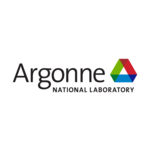
New Design for Lithium-air Battery Could Offer Much Longer Driving Range Compared With the Lithium-ion Battery:
New Batteries Could One Day Power Cars, Airplanes, Trucks
LEMONT,Ill.–(BUSINESS WIRE)–Many owners of electric cars have wished for a battery pack that could power their vehicle for more than a thousand miles on a single charge. Researchers at the Illinois Institute of Technology (IIT) and U.S. Department of Energy’s Argonne National Laboratory have developed a lithium-air battery that could make that dream a reality. The team’s new battery design could also one day power domestic airplanes and long-haul trucks.
The main new component in this lithium-air battery is a solid electrolyte instead of the usual liquid variety. Batteries with solid electrolytes are not subject to the safety issue with the liquid electrolytes used in lithium-ion and other battery types, which can overheat and catch fire.
More importantly, the team’s lithium-air solid electrolyte design can potentially boost the battery’s energy density by as much as four times above lithium-ion batteries, which translates into longer driving range.
The team’s new solid electrolyte is composed of a ceramic polymer material made from relatively inexpensive elements in nanoparticle form. This new solid enables chemical reactions that produce lithium oxide on discharge.
In past lithium-air designs, the lithium in a lithium metal anode moves through a liquid electrolyte to combine with oxygen during the discharge, yielding lithium peroxide or superoxide at the cathode. The lithium peroxide or superoxide is then broken back down into its lithium and oxygen components during the charge. This chemical reaction stores and releases energy on demand.
The chemical reaction yielding lithium oxide involves four electrons stored per oxygen molecule, whereas that for lithium superoxide or peroxide only involves one or two electrons. More electrons stored translates into higher energy density.
The team’s lithium-air design is the first lithium-air test cell that has achieved a four-electron reaction at room temperature. It also operates with oxygen supplied by air from the surrounding environment. The capability to run with air avoids the need for oxygen tanks to operate, a problem with earlier designs.
With further development, the team expects their new battery design could reach a record energy density of 1,200 watt-hours per kilogram, nearly four times better than lithium-ion batteries.
Contacts
Christopher J. Kramer
Head of Media Relations
Argonne National Laboratory
media@anl.gov
Office: 630.252.5580

